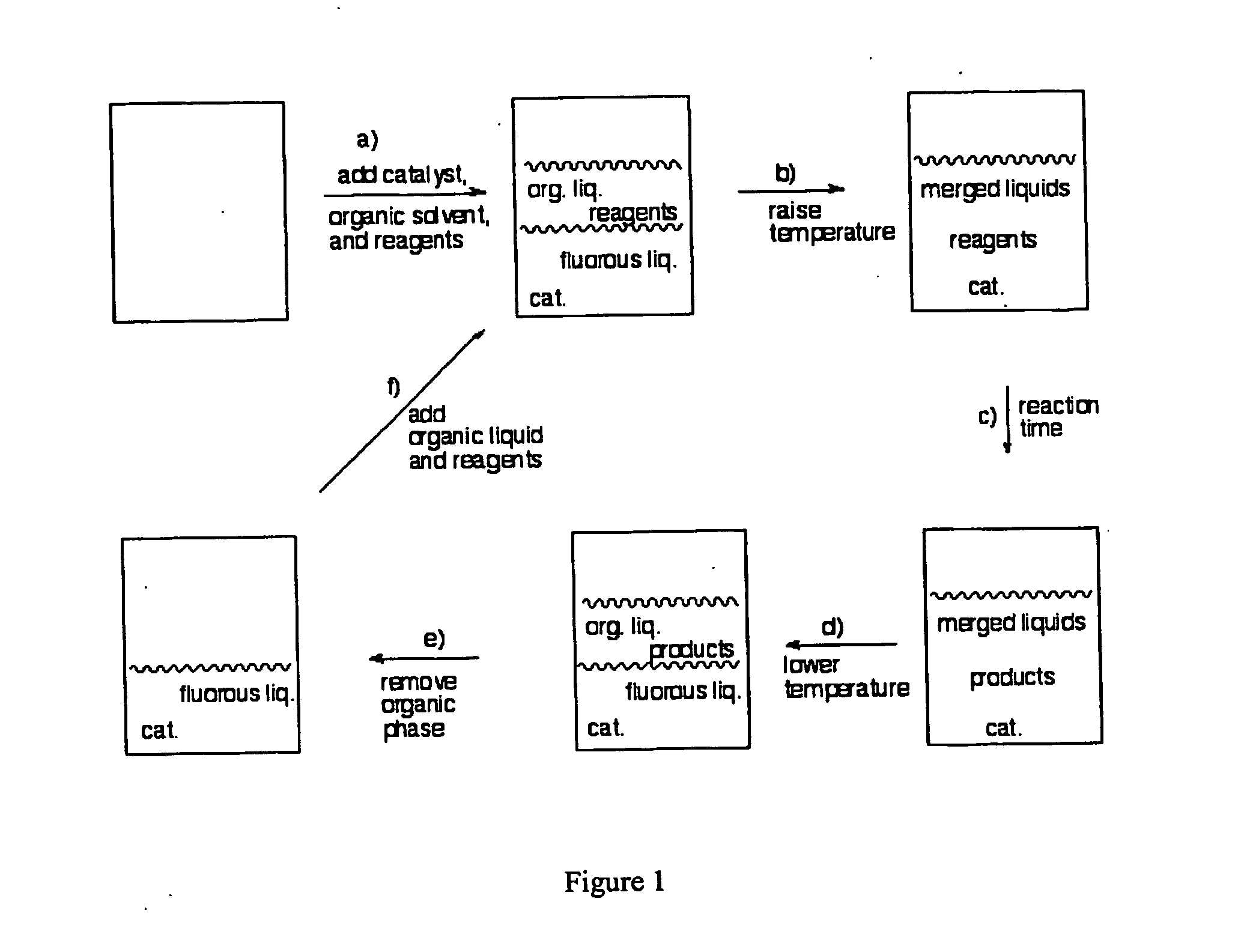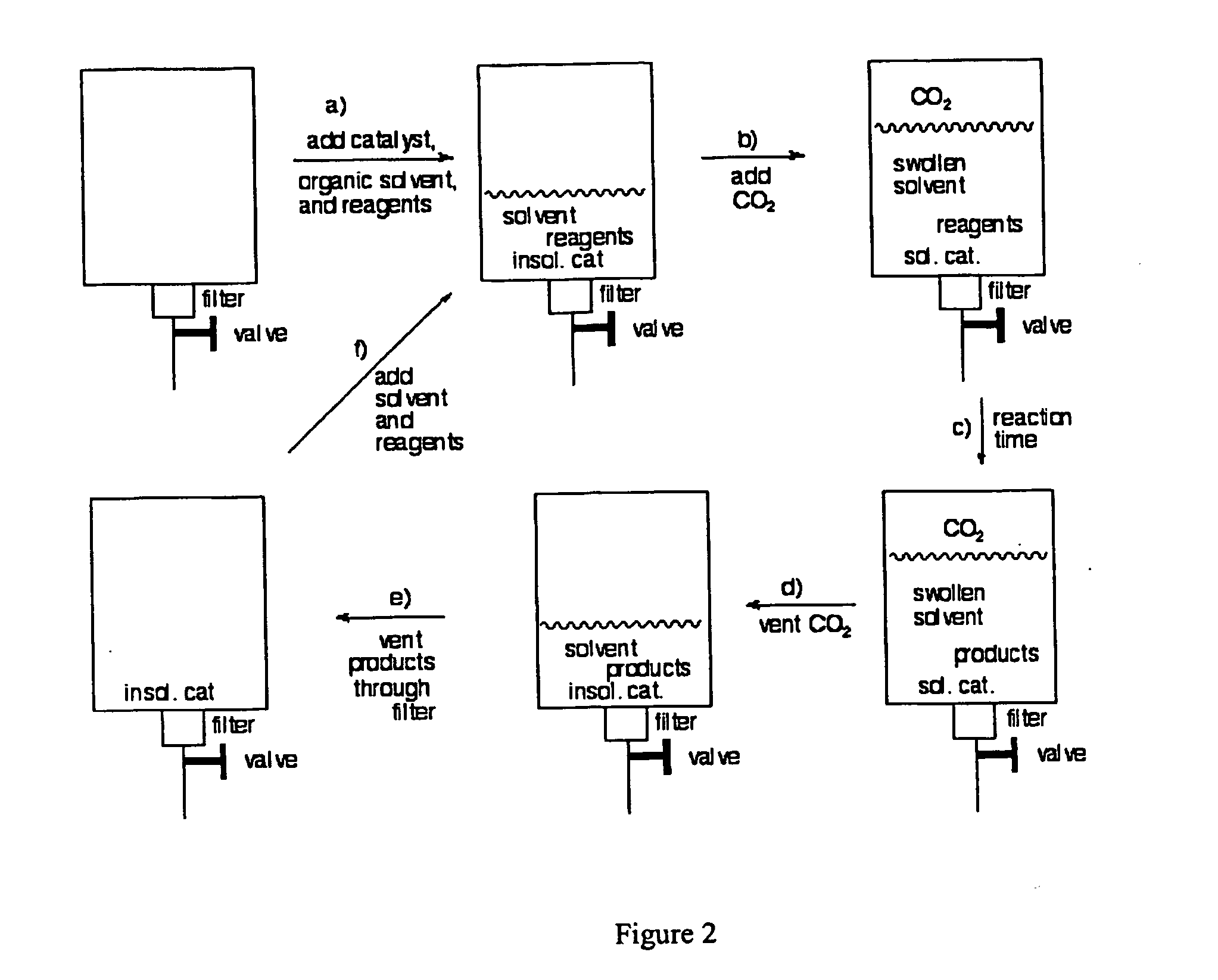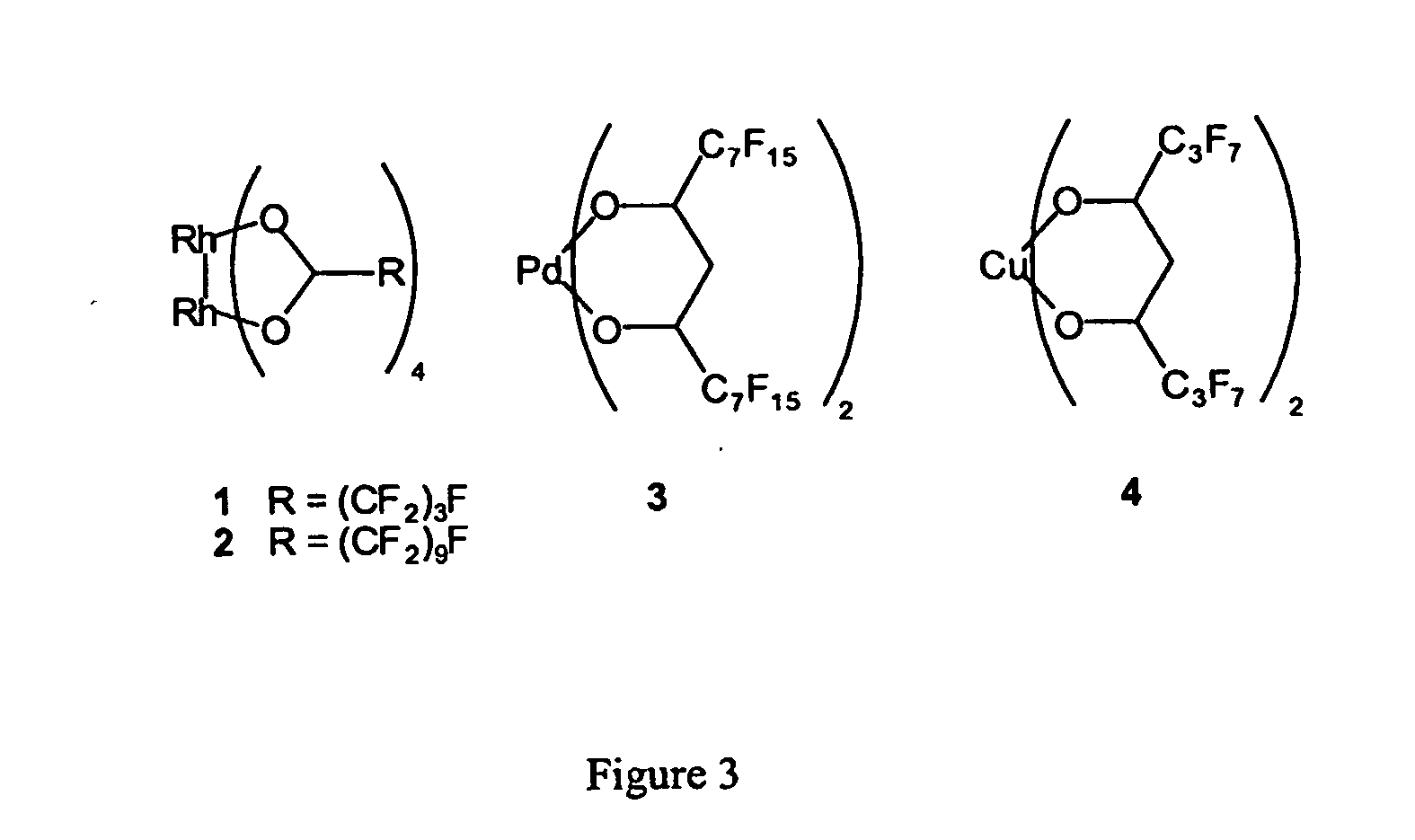Methods for solubilizing and recovering fluorinate compounds
a fluorinate compound and solubilization technology, applied in the field of fluorinate compound solvent systems, can solve the problems of inability to recover fluorinate compounds, disadvantages of fluorine solvents, and volatile fluorine solvents used as the lower liquid phase, so as to reduce the gaseous pressure of carbon dioxide and achieve efficient recovery and recycling of catalysts
- Summary
- Abstract
- Description
- Claims
- Application Information
AI Technical Summary
Benefits of technology
Problems solved by technology
Method used
Image
Examples
example 1
Synthesis of Fluorinated Complexes and Observations of Solubility
[0079] A. Synthesis
[0080] The complex Rh2(O2C(CF2)3F)4 (complex 1 in FIG. 3) was prepared by the literature method, as described in Schurig, Inorg. Chem. (1986), 25, 945.
[0081] The bis(methanol) adduct of complex 2 (i.e. Rh2(O2C(CF2)9F)4(MeOH)2) was prepared by heating 32 equivalents of HO2C(CF2)9F with 1 equivalent of Rh2(OAc)4 to 150° C. in a closed vessel without added solvent for 16 h. The green crude product (a mixture of green Rh2(O2C(CF2)9F)4 and white HO2C(CF2)9F) was purified by reprecipitation from methanol, giving blue Rh2(O2C(CF2)9F)4(MeOH)2. IR 1650 (s), 1429 (m), 1363 (m), 1214 (s), 1154 (s). Heating the solid blue complex under strong vacuum to 100° C. for one hour gave the green complex (Rh2(O2C(CF2)9F)4, which regenerates the Rh2(O2C(CF2)9F)4(MeOH)2 complex upon contact with methanol.
[0082] Complexes 3 and 4 were prepared as described in the literature. Complex 3 was prepared as described in Betzem...
example 2
Catalytic Reactions
[0086] Catalytic reactions by fluorinated homogeneous catalysts can be conducted in CO2-expanded organic solvents. The reaction can be compared to the same reaction in the organic solvents under 1 atm of nitrogen. In one embodiment, CO2 can enhance the rate of homogeneously catalysed reactions by merging the phases.
[0087] For example, the use of carbon dioxide expanded solvents for cyclopropanation reactions was studied. A preliminary study of fluorous biphasic cyclopropanation was described in Endres, Maas, Tetrahedron Letters (1999), 40, 6365.
[0088] Cyclohexane is expanded by application of gaseous CO2 pressure to make the cyclohexane a better solvent for dissolving fluorinated catalysts. The application of CO2 pressure is used to accelerate a reaction which is catalyzed by a fluorinated catalyst in a non-fluorous solvent.
[0089] The decomposition of ethyl diazoacetate in the presence of styrene shown below was found to be faster in CO2 expanded cyclohexane (...
example 3
Recrystallization of Fluorinated Compounds
[0092] A. Crystallization of a fluorinated complex. Crystals of highly fluorinated complexes were obtained for X-ray crystallography. Structures of such compounds are relatively rare in the literature because the compounds are usually obtained as intractable oils and because of excessive thermal motion or disorder in the fluorinated alkyl chains. Although the latter problem is difficult to avoid, the former problem can be obviated by crystallization of the complexes from CO2-expanded solvents. The bis(N,N-dimethylformamide) adduct of complex 1 was recrystallized from CO2-expanded toluene in the following manner.
[0093] Rhodium tetrakis(perfluorobutanoate), Rh2(O2C(CF2)3F)4, (30 mg, 28 μmol), toluene (0.4 mL), DMF (10 μL), and a small stir bar were placed in a small vial inside a steel pressure vessel. The vessel was warmed to 35° C. and CO2 (68 bar) was added. Pressures as low as 40-50 bar suffice with most compounds, so that the pressure o...
PUM
| Property | Measurement | Unit |
|---|---|---|
| Time | aaaaa | aaaaa |
| Time | aaaaa | aaaaa |
| Pressure | aaaaa | aaaaa |
Abstract
Description
Claims
Application Information
 Login to View More
Login to View More - R&D
- Intellectual Property
- Life Sciences
- Materials
- Tech Scout
- Unparalleled Data Quality
- Higher Quality Content
- 60% Fewer Hallucinations
Browse by: Latest US Patents, China's latest patents, Technical Efficacy Thesaurus, Application Domain, Technology Topic, Popular Technical Reports.
© 2025 PatSnap. All rights reserved.Legal|Privacy policy|Modern Slavery Act Transparency Statement|Sitemap|About US| Contact US: help@patsnap.com



